The engineering design process is a structured approach to solving problems creatively, emphasizing critical thinking and innovation․ It guides engineers through defining issues, brainstorming solutions, and refining designs․ Widely used in STEM education, it fosters collaboration, communication, and practical application of scientific principles․ Worksheets play a key role, providing frameworks for organizing ideas and documenting progress, making the process accessible and engaging for learners of all levels․
What is the Engineering Design Process?
The engineering design process is a structured, iterative method used by engineers to solve problems and create innovative solutions․ It involves a series of steps, including identifying the problem, researching, brainstorming, evaluating, prototyping, testing, and refining․ This process encourages critical thinking, collaboration, and the practical application of scientific and mathematical principles․ It is widely applied in STEM education to teach students how to approach real-world challenges systematically․ Worksheets are often used to guide this process, providing a framework for documenting ideas, setting criteria, and tracking progress․ By following these steps, engineers can develop efficient and effective designs tailored to meet specific needs and constraints․
Importance of the Engineering Design Process in Problem Solving
The engineering design process is essential for addressing complex challenges systematically․ It provides a structured framework for identifying problems, gathering information, and developing solutions․ By emphasizing critical thinking and creativity, this process equips individuals with the skills to tackle real-world issues effectively․ It also fosters collaboration and communication, which are crucial in team-based problem-solving scenarios․ The iterative nature of the process encourages continuous refinement, ensuring that designs are optimized for functionality and efficiency․ In educational settings, it prepares students for STEM careers by teaching them to approach problems methodically․ Worksheets further enhance this process by providing a clear structure for documenting ideas, setting criteria, and tracking progress, making it easier to visualize and improve solutions․
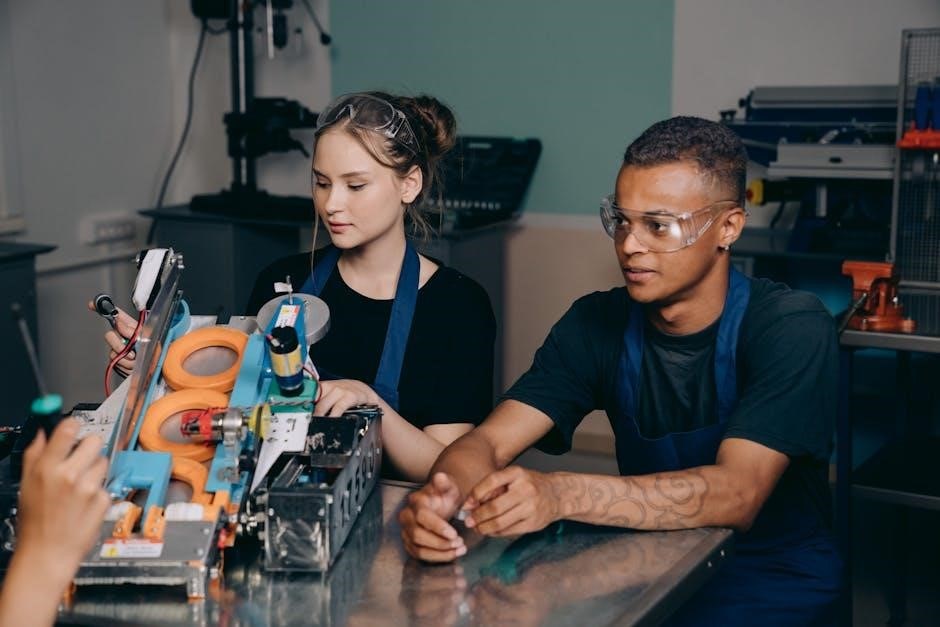
Steps of the Engineering Design Process
The process involves identifying the problem, defining criteria, researching, brainstorming, evaluating ideas, planning, prototyping, testing, and refining the design to ensure an optimal solution․
Step 1: Identify the Problem
Identifying the problem is the foundation of the engineering design process․ It involves clearly defining the challenge or need that requires a solution․ Engineers must ask questions to fully understand the issue, such as “What is the goal?” or “What needs to be achieved?” This step ensures that the problem is well-defined and agreed upon by all team members․ Worksheets often include sections for stating the problem, listing requirements, and noting constraints․ By focusing on the root cause, engineers can develop solutions that address the core issue effectively․ This clarity sets the stage for the subsequent steps in the design process․
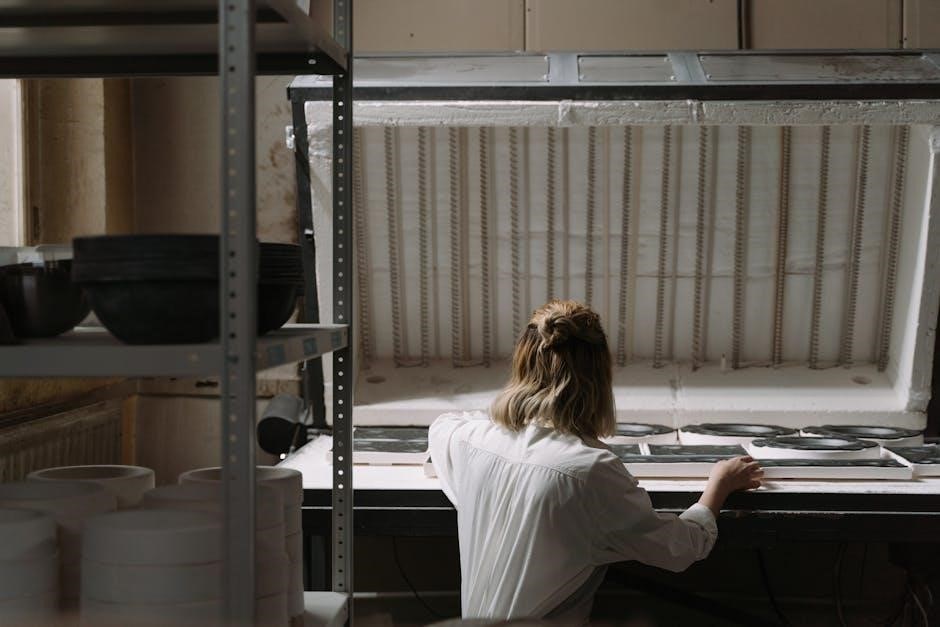
Step 2: Identify Criteria and Constraints
After identifying the problem, the next step is to determine the criteria and constraints․ Criteria are the requirements the solution must meet, while constraints are the limitations or boundaries that must be respected․ For example, cost, materials, or time restrictions are common constraints․ Worksheets often include sections for listing these elements, ensuring clarity and alignment among team members․ Defining these factors early helps narrow down potential solutions and guides the brainstorming process․ By understanding what the solution must achieve and what it cannot exceed, engineers can develop practical and feasible designs that meet stakeholder needs․ This step ensures that the final solution is both effective and realistic․
Step 3: Research and Gather Information
Research and gathering information is a critical step in the engineering design process․ It involves collecting data and understanding the problem’s context, including existing solutions, materials, and technologies․ Worksheets often include sections for documenting research findings, ensuring that all relevant information is organized and accessible․ This step helps engineers identify patterns, opportunities, and challenges, which informs the brainstorming process․ By conducting thorough research, engineers can make informed decisions and avoid duplicating efforts․ This phase also involves analyzing user needs, industry standards, and environmental factors, ensuring that the design aligns with real-world requirements․ Effective research lays the foundation for innovative and practical solutions․
Step 4: Brainstorm and Generate Ideas

Brainstorming is a creative phase where engineers generate a wide range of potential solutions to the problem․ The goal is to think freely without judgment, encouraging innovative and diverse ideas․ Worksheets often include sections for listing ideas, sketching concepts, and noting pros and cons․ This step fosters collaboration, as teams can combine perspectives and build on each other’s suggestions․ Techniques like mind mapping or SCAMPER (Substitute, Combine, Adapt, Modify, Put to Another Use, Eliminate, and Reverse) can stimulate creativity․ The best ideas are refined and narrowed down, but this step emphasizes quantity over quality, ensuring all possibilities are explored before moving to evaluation․ It’s a critical step for innovation and lays the groundwork for selecting the most promising design․
Step 5: Evaluate and Select the Best Design
Evaluating and selecting the best design involves analyzing the ideas generated during brainstorming against the defined criteria and constraints․ Engineers compare the pros and cons of each solution, considering factors like feasibility, cost, and efficiency․ Worksheets often include tables or matrices to organize and score each idea systematically․ This step ensures that the chosen design aligns with the problem’s requirements and constraints․ Collaboration is key, as teams discuss and debate to reach a consensus․ The goal is to identify the most promising solution that balances creativity with practicality․ Once selected, the design moves forward to the next phase, where it is refined and developed into a detailed plan or prototype․
Step 6: Develop a Plan and Create a Prototype
Developing a plan and creating a prototype is a critical phase where ideas are transformed into actionable solutions․ A detailed plan outlines the steps, timelines, and materials needed to bring the design to life․ Worksheets often include sections for sketches, diagrams, and lists of required resources․ Once the plan is finalized, a prototype is built to test the design’s feasibility and performance․ This step allows engineers to visualize the solution and identify potential flaws or areas for improvement․ Prototypes can range from simple models to fully functional versions, depending on the complexity of the design․ Iterative testing and refinement are essential during this phase to ensure the design meets the established criteria and constraints․
Step 7: Test and Evaluate the Design
Testing and evaluating the design is a crucial step where the prototype is assessed to determine if it meets the defined criteria and constraints․ Engineers conduct experiments, gather data, and analyze the results to identify strengths and weaknesses․ Worksheets often include sections for recording test results, observations, and feedback․ This phase ensures that the design performs as intended and addresses the original problem․ If the design fails to meet expectations, engineers document the reasons and use this information to refine their approach․ Effective evaluation leads to informed decision-making and sets the stage for further iteration and improvement․ This step emphasizes the importance of rigorous testing in achieving a successful and reliable solution․
Step 8: Refine and Iterate on the Design
Refining and iterating on the design is an essential step where engineers use feedback and test results to improve their solution․ This phase involves making necessary adjustments to enhance performance, efficiency, and functionality․ Worksheets often include sections for documenting revisions, reflecting on challenges, and planning further improvements․ Iteration is a natural part of the engineering process, as designs rarely succeed on the first attempt․ By analyzing what works and what doesn’t, engineers can identify areas for enhancement and implement changes․ This step encourages perseverance and creativity, as it acknowledges that failure is a valuable learning opportunity․ The process is cyclical, meaning engineers may revisit earlier steps, such as testing or brainstorming, to refine their design further․ Worksheets help organize this iterative process, ensuring that all revisions are methodically recorded and reviewed․ This step reinforces the importance of patience and precision in achieving a polished final product․
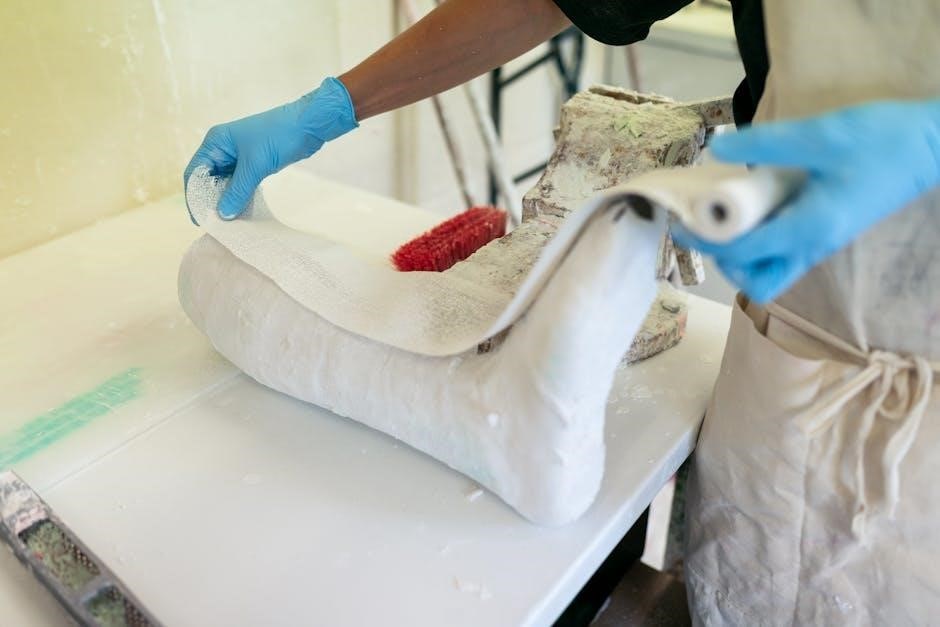
Engineering Design Process Worksheets: An Overview
Engineering design process worksheets are structured tools that guide engineers through each stage of problem-solving․ They help organize ideas, document progress, and ensure systematic development, supporting STEM education and practical application․
What is an Engineering Design Process Worksheet?
An engineering design process worksheet is a structured document designed to guide individuals through the engineering design process․ It typically includes sections for each step of the process, such as identifying the problem, brainstorming solutions, and evaluating designs․ These worksheets provide a clear framework for organizing thoughts, documenting progress, and ensuring that all critical aspects of the design process are considered․ They are often used in educational settings to teach students the fundamentals of engineering and problem-solving․ By breaking down the design process into manageable parts, worksheets help users stay focused and systematic in their approach, fostering innovation and effective problem-solving skills․
Key Components of a Worksheet

A typical engineering design process worksheet includes structured sections for each step of the design process, such as problem identification, criteria, brainstorming, planning, and testing․ It often features spaces for defining the problem, listing constraints, and documenting brainstormed ideas․ Some worksheets include charts or tables to organize information, while others provide prompts to guide critical thinking․ Additional components may include sections for sketching designs, outlining materials, and recording test results․ Certain worksheets also incorporate reflection areas for evaluating the design process and identifying areas for improvement․ These components ensure a comprehensive and organized approach to problem-solving, making the worksheet an invaluable tool for both students and professionals․
How Worksheets Facilitate the Design Process
Engineering design process worksheets serve as a structured guide, breaking down complex tasks into manageable steps; They help users systematically identify problems, gather information, and brainstorm solutions․ By providing dedicated spaces for each stage, worksheets ensure clarity and organization, reducing overwhelm․ They encourage active participation, fostering collaboration among teams and enhancing communication of ideas․ Worksheets also act as a record of progress, allowing for easy review and reflection․ This systematic approach promotes a deeper understanding of the design process, making it easier to iterate and refine solutions․ Ultimately, worksheets streamline the creative problem-solving journey, making it more efficient and effective for learners and professionals alike in STEM fields․
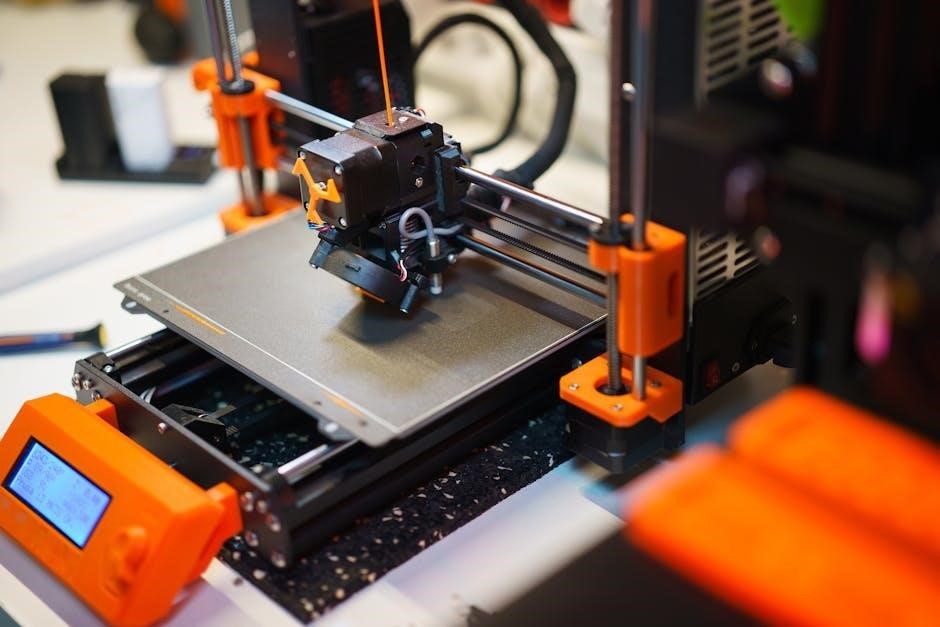
Benefits of Using Engineering Design Process Worksheets
Engineering design process worksheets enhance clarity, organization, and collaboration․ They provide structured STEM activities, fostering innovation and systematic problem-solving․
Enhancing Problem-Solving Skills
Engineering design process worksheets enhance problem-solving skills by providing a structured framework for identifying, analyzing, and addressing challenges․ These tools guide users through defining problems, brainstorming solutions, and evaluating outcomes․ By breaking down complex tasks into manageable steps, worksheets encourage critical thinking and creativity․ They also promote the development of analytical skills, as users learn to assess criteria, constraints, and trade-offs․ The iterative nature of the design process, supported by worksheets, teaches resilience and adaptability․ Students and professionals alike benefit from improved decision-making and the ability to refine ideas based on feedback․ This structured approach ensures that problem-solving becomes systematic, fostering innovation and effectiveness in addressing real-world challenges․
Improving Collaboration and Communication
Engineering design process worksheets significantly enhance collaboration and communication among team members․ By providing a shared framework, these tools ensure that all participants are aligned with the project’s objectives and requirements․ Worksheets facilitate brainstorming sessions, allowing individuals to contribute ideas and build on each other’s perspectives․ The structured format encourages active listening and clear articulation of thoughts, fostering effective teamwork․ Additionally, worksheets serve as a central document for recording decisions, making it easier for team members to reference and understand the design process․ This transparency reduces misunderstandings and ensures that everyone is working toward the same goals․ By promoting organized dialogue and shared documentation, engineering design process worksheets strengthen interpersonal skills and teamwork dynamics․
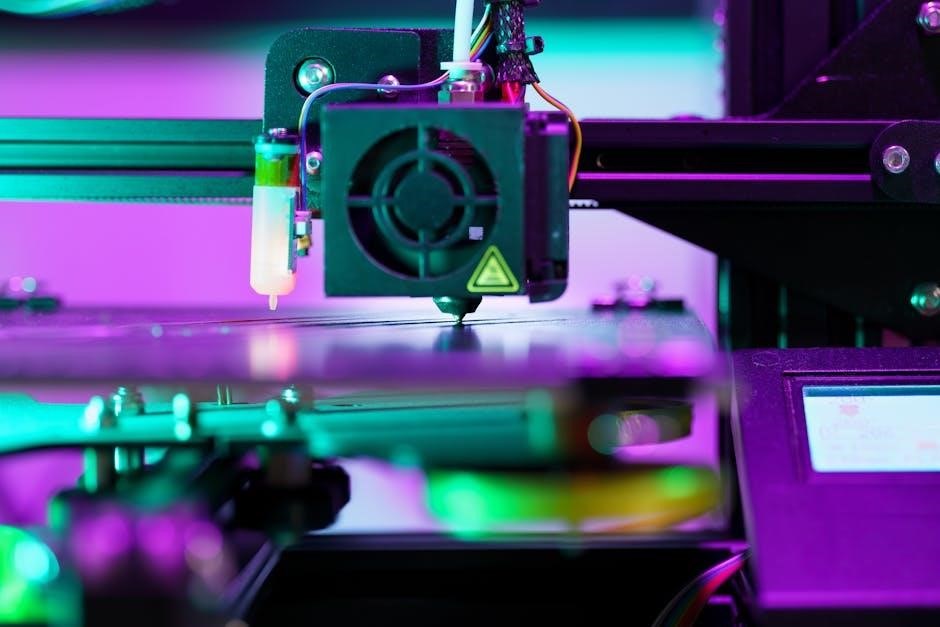
Supporting STEM Education
Engineering design process worksheets are invaluable tools in STEM education, as they provide structured frameworks for students to apply scientific and mathematical concepts to real-world problems․ These worksheets guide learners through the iterative design process, encouraging critical thinking, creativity, and problem-solving skills․ By integrating practical challenges with theoretical knowledge, they help students develop a deeper understanding of engineering principles․ Worksheets also promote hands-on learning, allowing students to document their ideas, test hypotheses, and refine their designs․ This approach aligns with STEM objectives by fostering innovation, collaboration, and analytical reasoning․ Educators can use these resources to create engaging lessons, ensuring students gain the skills needed to excel in science, technology, engineering, and mathematics․ This makes worksheets essential for modern STEM curricula․
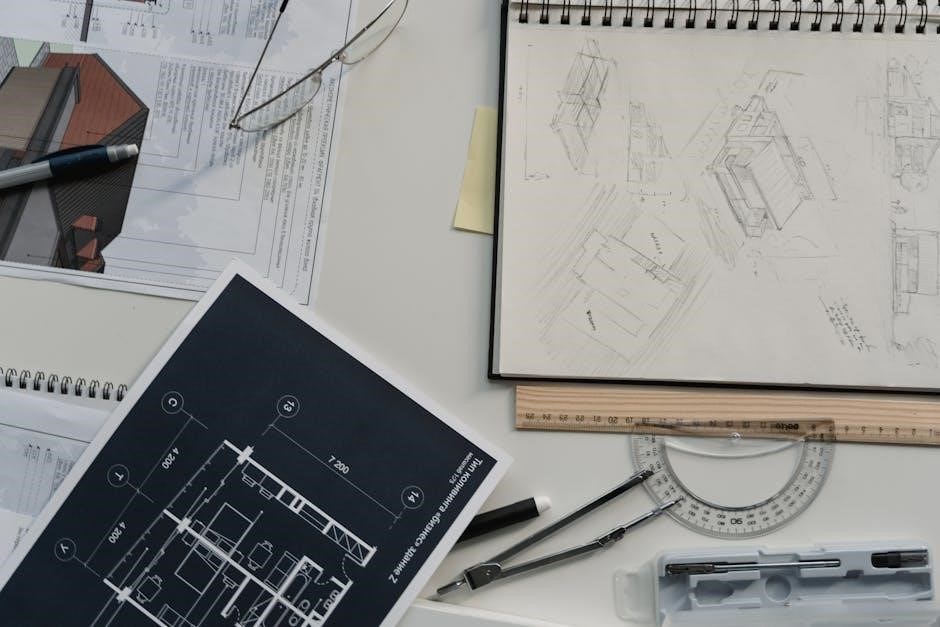
How to Use an Engineering Design Process Worksheet
Start by understanding the problem and requirements․ Use the worksheet to brainstorm ideas, outline constraints, and document your design process․ Plan and test your solution systematically․
Understanding the Problem Statement
Understanding the problem statement is the foundation of the engineering design process․ It involves clearly defining the issue, identifying the goal, and recognizing what needs to be achieved․ Engineers must ask questions to gather all necessary details, ensuring they fully comprehend the challenge․ The problem statement should be concise and specific, outlining the key objectives and any constraints or limitations․ Worksheets often include sections dedicated to this step, guiding users to articulate the problem effectively․ Without a clear understanding, subsequent steps may lack direction, making this phase crucial for a successful design process․ Clarity here sets the stage for effective brainstorming and solution development․
Applying the Engineering Design Steps
Applying the engineering design steps involves systematically addressing each phase of the process, from identifying the problem to refining the final design․ Worksheets serve as invaluable tools, providing structured sections for documenting progress at each stage․ They guide users in defining criteria, conducting research, brainstorming solutions, and evaluating prototypes․ By following these steps, engineers and students can organize their thoughts, explore creative ideas, and iteratively improve their designs․ The use of worksheets ensures that no critical phase is overlooked, fostering a comprehensive understanding of the problem and its potential solutions․ This structured approach enhances learning and collaboration, making the design process both efficient and effective․
Brainstorming and Documenting Ideas
Brainstorming and documenting ideas are essential steps in the engineering design process, fostering creativity and collaboration․ Worksheets provide dedicated spaces for listing potential solutions, ensuring no idea is overlooked․ During this phase, teams generate a wide range of concepts, focusing on feasibility and alignment with project goals․ Documenting ideas allows for clear communication and organization, making it easier to evaluate and refine them later․ Worksheets often include sections for sketching, describing, and prioritizing ideas, helping to transform abstract thoughts into tangible designs․ This structured approach encourages innovation while maintaining focus on the problem at hand, ensuring all possibilities are explored before moving forward․
Testing and Refining the Design
Testing and refining the design are critical steps in the engineering design process, ensuring the solution meets the defined criteria and constraints․ Worksheets often include sections for documenting test results, allowing teams to evaluate how well the prototype performs․ This phase involves identifying areas for improvement and iterating on the design based on feedback․ By systematically testing and refining, engineers can address flaws, enhance functionality, and optimize the design for real-world application․ Worksheets guide this process, providing structured spaces for recording observations, analyzing data, and planning revisions․ This iterative approach ensures the final design is robust, efficient, and aligned with the problem’s requirements, fostering a culture of continuous improvement and precision․

Worksheets are essential tools in the engineering design process, providing structure and organization for each step․ They help users systematically document their journey from identifying problems to testing solutions, ensuring clarity and accountability․ By breaking down complex tasks into manageable sections, worksheets facilitate collaboration and communication among teams․ They also support STEM education by making abstract concepts tangible and accessible for learners․ Worksheets encourage iteration and refinement, fostering a mindset of continuous improvement․ Ultimately, they bridge the gap between theoretical knowledge and practical application, empowering individuals to develop innovative solutions․ Their role in guiding the design process underscores their value as indispensable resources for engineers and educators alike, preparing future professionals to tackle real-world challenges with confidence and creativity․